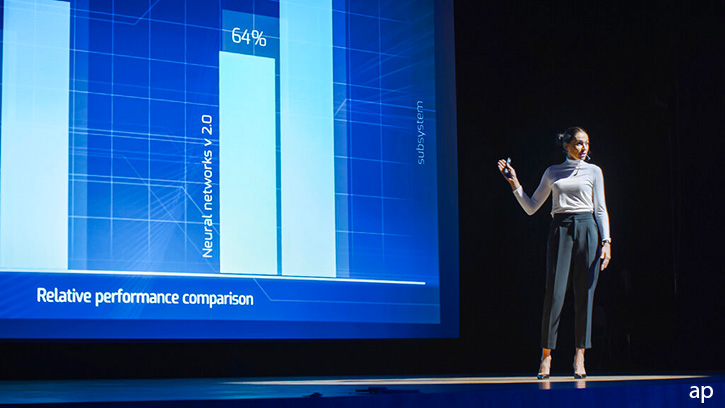
The tech-focused Nasdaq Composite has had a rocky start this year, and investors are concerned that the sector could be about to follow the same pattern as it did when the dotcom bubble burst in 2000-2002.
We look at the evidence for the old adage “this time it’s different”.
Turning Point
The most obvious red flag for weakening tech sentiment is special purpose acquisition companies (SPACs). Those financial vehicles raised billions when interest rates were low, with the purpose of acquiring or merging with a listed company within two years. Even Donald Trump got in on the action. Now SPACs are being hit by the fall in valuations and the lack of liquidity or financing – and some of their most prominent promoters are currently throwing in the towel.
The previous bubble implosion was more related to accounting scandals (Enron, Worldcom), the use of financial shenanigans (such as off-balance sheet items) or the excessive recourse of derivatives (labelled at the time as “weapons of mass destruction” by Warren Buffett).
There are many unprofitable companies that will probably remain unprofitable for a while, some for temporary reasons (due to the higher risk of recession), but others for more structural and valid ones (the inability to prove that their business model creates value, as the return they generate doesn’t cover their cost of capital).
That was the case in 2000-2002 when a company like Pets.com was liquidated within a year after having gone public.
But a more fundamental reason for a pursuit of the market correction would be a downward revision of earnings estimates.
All Eyes on Earnings
So far, the main driver of the market correction has been a sharp drop in valuation multiples, provoked by the rise in interest rates and the fear of a subsequent recession.
But earnings estimates have held up well.
There have been a number of significant profit warnings recently, such as those from Snap (SNAP) , Zoom Video Communications (ZM) or Peloton Interactive (PTON), which were the poster children of the pandemic world, but so far those seem more idiosyncratic than revealing broader issues.
That might not go on forever and could lead analysts to review their earnings estimates downward going forward. Currently, the Nasdaq Composite Index trades on a price/earnings ratio of 35 times earnings, which remains quite high compared with global and the US markets (which trades on a P/E closer to 16x at the moment, in line with history).
One key risk identified by investors would be that of a recessionary scenario, where the larger the downward earnings revision, the lower the index would go.
Based on the latest comments from U.S. Fed chair Jerome Powell, that scenario is increasingly likely. The conclusion here would be to wait and see how earnings are evolving in the coming quarters before starting to look for opportunities. Q3 earnings season is about to begin, with U.S. companies starting to report in October.
Some Lessons from History
Investors could also consider technical factors. The index moved below its 200 day-moving average at the beginning of this year.
Back in 2000, when that happened, the index went down further.
Chart analysis is not infallible, however. There are many occurrences when the two lines crossed one over another, like in the fourth quarter of 2018, during the summer of 2015, during the euro crisis of 2010-2012, and of course the financial crisis of 2008.
All those episodes were triggered by different macro events, but none generated a market downfall the size of the tech bubble implosion of 2000 – one reason for that might be the fact that central banks were conducting a very dovish monetary policy and held interest rates low.
This difference could prolong the current downturn further.
Valuation is Key
As an investor, if you try to time the market, and predict when the Nasdaq Composite Index will hit a low, you are playing a dangerous game.
Timing the market isn’t actually a Morningstar mantra, because our data shows time and time again that this leads to lower returns for the investor.
On the other hand, if your focus is on the long term and that you can withstand market volatility, your main concern should be buying quality assets and paying attention to the valuation.
In this respect, market volatility is not an issue. True, it’s difficult to stomach virtual losses when you see a stock price drop a further 30 or 40%, but if your asset is a quality one, this should not bother you too much.
Focusing on the valuation is the main way that will help you generate decent returns and control for risk.
Be Warned: The NASDAQ Isn't a Particularly Good Investment
As Morningstar analyst Ryan Jackson explains, the rules underpinning the construction of the Nasdaq-100 Index are borne out of Nasdaq’s desire to promote their exchange–not investment rationale. “The benchmark plucks the 100 largest nonfinancials firms listed on the Nasdaq and weights them by market cap. It automatically excludes stocks listed elsewhere, which shrinks the fund’s opportunity set for no economic reason. Some of the large-cap market’s best recent performers, like AbbVie ABBV and Eli Lilly LLY, are excluded because of their New York Stock Exchange listings,” he explains.
He goes on to write that the blueprint that underpins the Nasdaq-100 Index is not rooted in a sensible investment rationale. The benchmark bases stocks’ eligibility on their primary trading venue, limiting its opportunities and hurting diversification.
“Market-cap weighting is sensible, but a Nasdaq-only mandate is not. The Nasdaq-100 is a decidedly tech-heavy index, but even prominent tech firms like Salesforce.com CRM, Oracle ORCL, and Visa V are omitted because they are also listed on the New York Stock Exchange. Whittling an index out of an exchange is not backed by sound economic intuition and leads to arbitrary exclusions like these,” he adds.






.jpg)


:quality(80)/cloudfront-us-east-1.images.arcpublishing.com/morningstar/7WLK3HWLZBFR7NKI45PXWUD6OI.jpg)










